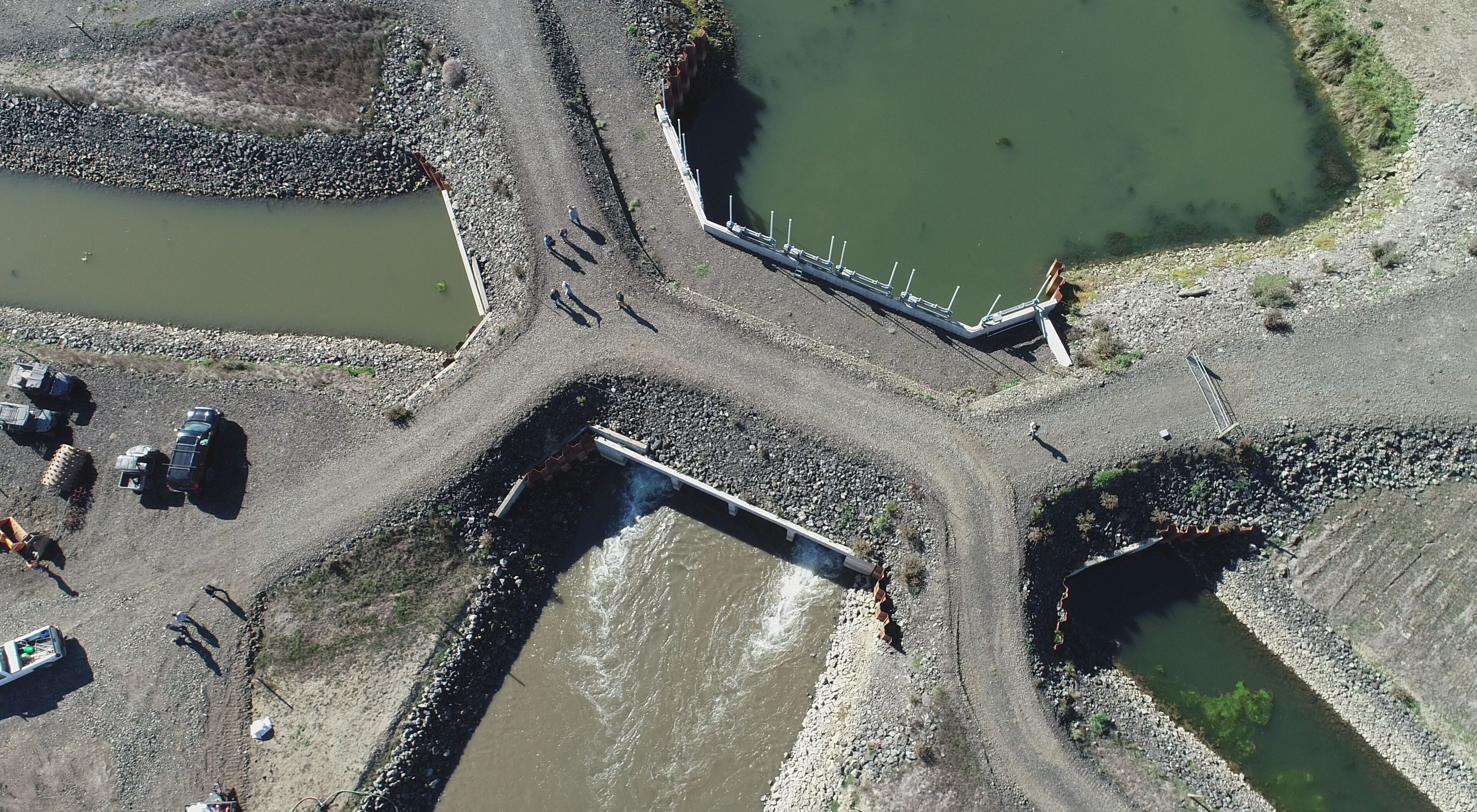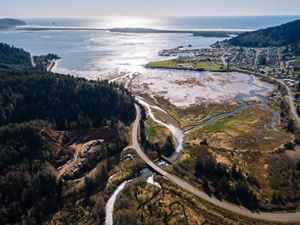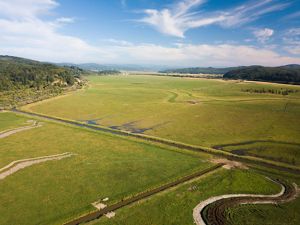What is a Tide Gate and Why Does it Matter?
Fixing failing tide gates is critical to Pacific salmon and estuary health.
In a juvenile salmon’s world—where everything and everyone wants to eat you—the bigger you are, the more likely you are to survive. How big you are depends entirely on how long you get to eat, rest and fatten up in your estuary before swimming into the open ocean. If access to your estuary is blocked by failing tide gates meant to keep agricultural land dry, you will be forced to head out into the ocean long before you're ready. And chances are, you won't make it back.
What Is a Tide Gate?
Tide gates, devices used to control tidal river water, are used by farmers and ranchers to provide dry agriculture and pasture land. However, failing tide gates also block fish passage. In nearly all of Oregon’s estuaries, from the Columbia River to the Coquille River on the South Coast, tide gate infrastructure is in disrepair, not meeting the needs of farmers and ranchers and not providing sufficient access to habitat many fish need to thrive.
There are between 1,000 and 1,500 tide gates in estuaries along the Oregon Coast and in waters connecting to the Columbia River. Most are likely failing due to age and outdated technology, at least partially blocking fish passage and negatively impacting the health of other fish and wildlife that rely on critical estuary habitat.
What Can We Do?
Over the past decade, we worked to restore habitat for juvenile coho salmon in southwestern Oregon estuaries by restoring tidal wetlands and installing a new state-of-the-art tide gate system at a special place called Winter Lake on the Coquille River. Recent fish monitoring of juvenile Coho salmon at Winter Lake revealed that fish reared here were both longer and heavier than fish in the adjacent river. Access to slower water with more food and resting spots gave them a head start and a much better chance of returning to the river to spawn.
We recently broke ground on another tide gate and wetlands restoration project downstream from Winter Lake and we expect the same great results there. We are also conducting research to determine priority locations where we can do similar work that will have the most positive impact on salmon and estuary health along the Oregon Coast.
We've installed innovative new tide gates at Winter Lake on the Coquille River that allow for fish passage and for agricultural fields to be flooded for juvenile salmon when they need it. But we've got a lot more work to do. There are between 1,000 and 1,500 tide gates in Oregon that may be negatively impacting fish passage and juvenile salmon habitat. With your support, we are committed to restoring the tidal wetlands salmon need to thrive.


